The Woy Woy aboriginal rock engraving site is famous for this line of nine ‘dancing rabbits‘ but they are probably more likely to be hares. Some people have suggested that they represent dancing people wearing headdress. There is another single ‘rabbit‘ at the Bulgandry site, about 2 kilometres away. On the left side of this panel is a male figure and the lower section shows a large fish. This image covers an area of approximately 6 meters by 4 meters.
This panel shows the layout of a number of fish, a shield, a decorated eel and a small wallaby. This image covers an area of approximately 5 meters by 4 meters.
This set shows a very nice eel and shield.
This engraving shows a very large female kangaroo.
This wonderful pair of wallabies is probably found less often. This is a false colour image.
A bit further along the track on a less visited rock platform is this excellent collection of six decorated shields and a boomerang arranged along a precipice overlooking Woy Woy Bay.
Near the arrangement of shields are these two figures that possibly represent seals or sea lions. This is a false colour image.
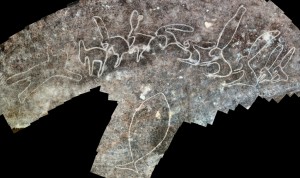
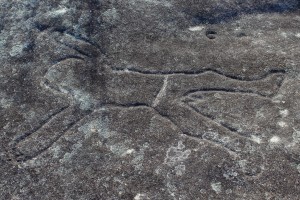
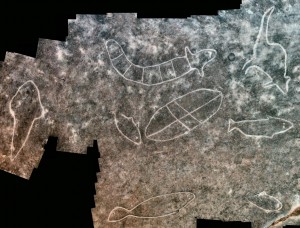
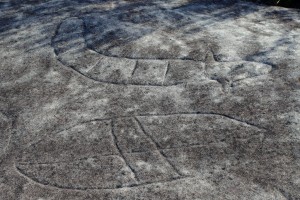
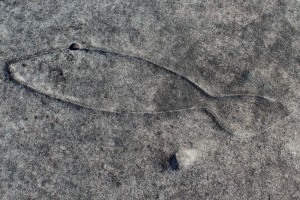
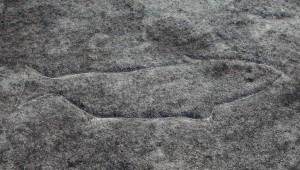
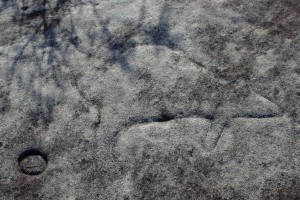
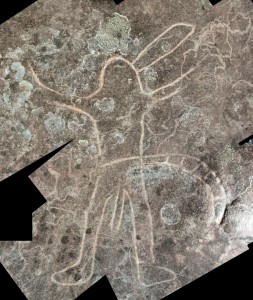
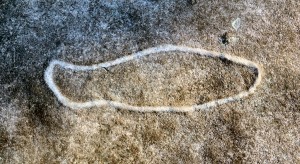
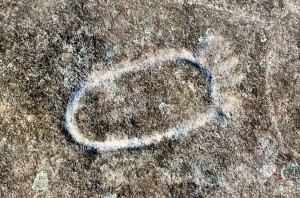
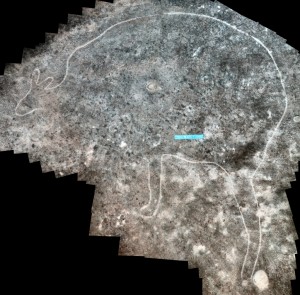
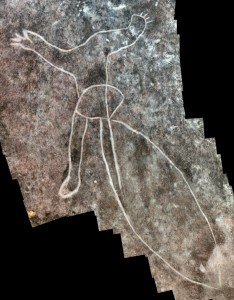
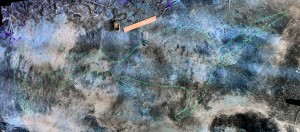
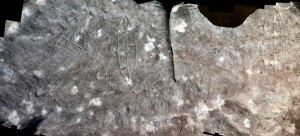
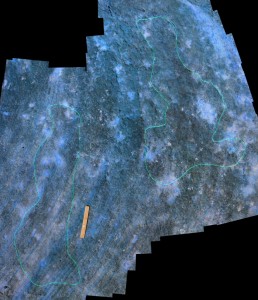

Hi,
great photography.
However, looking through your site it seems to me that you make too many interpretative comments that may or may not be correct eg;
1. At the EOC site you refer to the two large bird figures as emus. Are they? They have very short necks for emus and Aboriginal people knew what they were making. Might they not be brush turkeys for instance?
2. You refer to circles as moons. Are they? Might they not be suns? Bora rings?
3. You look at the size of a figure and make the unjustified conclusion that it may be a child, a young man or an adult. The size of the figure may mean something else.
The reason I bring this up is that many people may visit your site and take away from it your interpretations as fact and eventually their true meaning becomes so mired in unjustified interpretations and speculation that their significance and real meaning is confused.
By all means refer to figures as they are: bird, male, female, circular etc as they are accurate descriptions.
Sincerely,
Geoff.
G’day Geoff
Thankyou for you comments. The language that we use on this site is not intended to be conclusive but merely to give the reader a sense of scale (child size, adult, etc) or design (emus, moons, etc). We appreciate that there may be different interpretations of these engravings and we try as much as possible to not presuppose what the creators of these engravings were intending. We shall review the text on this site and attempt to describe these images more accurately as you suggest.
Thanks for getting back to me so promptly.
Engravings often have many layers of meaning but incorrect or guessed interpretations are best avoided because of the confusion they create. A perfect example of this is when people scratch a stone in the groove of an engraving so that they may photograph it. They are often at best guessing parts of the petroglyph.
I have seen a number of engravings that have been so disfigured by this practice that the original shape has changed. This distresses Aboriginal people greatly. That this confusion can occur so easily with a physical object like an engraving, leads you to realise that with a story it could happen so much more easily.
Thanks for your reply and especially for the statement of intent to review your descriptions.
Geoff.
Thank you for your wonderful site which has been a real bonus for a newbie to the area. I usually live on the south coast. Up being full time carer for mum and only get the odd window of a few hours to get out so this site has been fabulous in directing me to carving rich areas. Unfortunately this “dancing rabbits” site is driving me nuts. I have visited it half a dozen times in differing lights and all I can locate is the first set at the start of the platform. I have Clegg’s book with all of his info and still stumped. Any hot tips? and again thanks for the effort and cultural sensitivity your site exhibits. cheers Ray
The ‘dancing rabbits’ are located about 300 mt further on, near the far end of that rock platform.
Hullo,
I am very interested in Aboriginal rock carvings. Have been searching (again!) for a couple of hours for the dancing hares.
I read that one needs to go “another 300 metres” from a particular rock place, but which one I wonder?
I’d be very grateful for any help.
Thank you,
Jonathan Bligh
Tough titties Johhny boy – best advice is to don the old spectacles and go back for a closer with renewed eyesight!